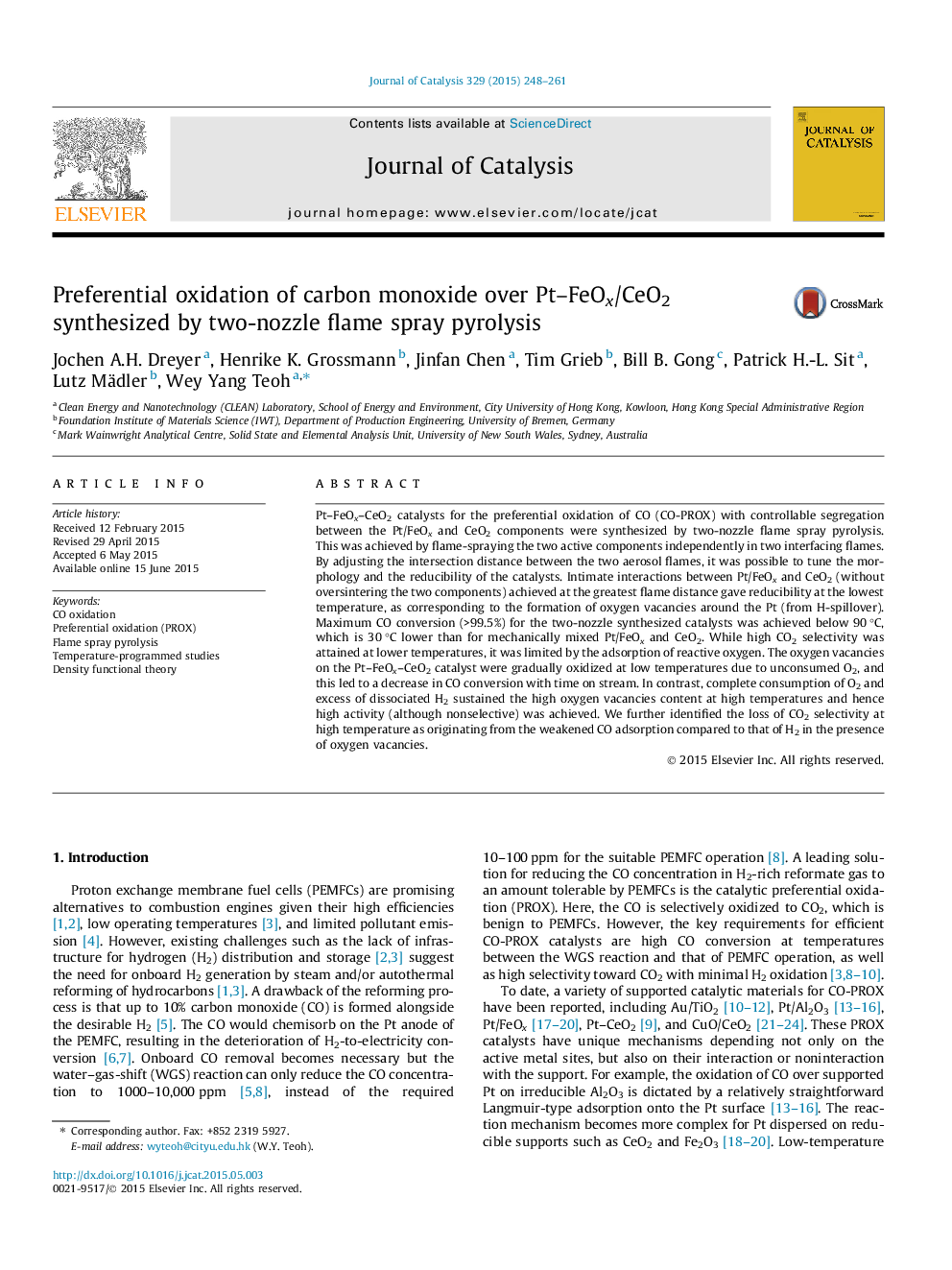| کد مقاله | کد نشریه | سال انتشار | مقاله انگلیسی | نسخه تمام متن |
|---|---|---|---|---|
| 60813 | 47548 | 2015 | 14 صفحه PDF | دانلود رایگان |

• Novel Pt–FeOx–CeO2 PROX catalyst synthesized with the double flame spray pyrolysis.
• Direct correlation between oxygen vacancies and the catalytic PROX performance.
• Influence of oxygen vacancies around Pt on the adsorption of CO and H2.
Pt–FeOx–CeO2 catalysts for the preferential oxidation of CO (CO-PROX) with controllable segregation between the Pt/FeOx and CeO2 components were synthesized by two-nozzle flame spray pyrolysis. This was achieved by flame-spraying the two active components independently in two interfacing flames. By adjusting the intersection distance between the two aerosol flames, it was possible to tune the morphology and the reducibility of the catalysts. Intimate interactions between Pt/FeOx and CeO2 (without oversintering the two components) achieved at the greatest flame distance gave reducibility at the lowest temperature, as corresponding to the formation of oxygen vacancies around the Pt (from H-spillover). Maximum CO conversion (>99.5%) for the two-nozzle synthesized catalysts was achieved below 90 °C, which is 30 °C lower than for mechanically mixed Pt/FeOx and CeO2. While high CO2 selectivity was attained at lower temperatures, it was limited by the adsorption of reactive oxygen. The oxygen vacancies on the Pt–FeOx–CeO2 catalyst were gradually oxidized at low temperatures due to unconsumed O2, and this led to a decrease in CO conversion with time on stream. In contrast, complete consumption of O2 and excess of dissociated H2 sustained the high oxygen vacancies content at high temperatures and hence high activity (although nonselective) was achieved. We further identified the loss of CO2 selectivity at high temperature as originating from the weakened CO adsorption compared to that of H2 in the presence of oxygen vacancies.
Figure optionsDownload high-quality image (187 K)Download as PowerPoint slide
Journal: Journal of Catalysis - Volume 329, September 2015, Pages 248–261